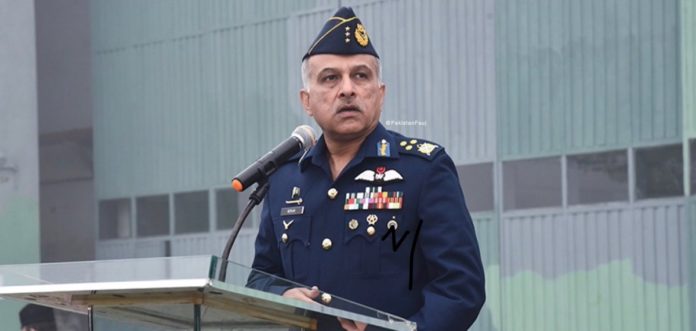The Pakistan Aeronautical Complex (PAC) started off as an overhaul factory for the Chinese F-6 fighter, with the first aircraft rolling out in 1979. Several more factories were added over the years, resulting in today’s vast complex at Kamra in northern Pakistan. PAC is a state-owned enterprise with the goal of self-reliance and indigenization in the field of military aviation. PAC is governed by a Board headed by the Chairman who is a serving Air Marshal of PAF. The PAC Board is overseen by the Ministry of Defence Production. PAC deals with two main aeronautical engineering activities: i) production of military aircraft, and ii) maintenance, repair, and overhaul (MRO) of military aircraft, engines, and ground-based radars.
Aircraft production takes place at the Aircraft Manufacturing Factory (AMF), the military aircraft production unit of Pakistan Aeronautical Complex. The factory was conceived for the licensed manufacture of the SAAB-Scania MFI-17 primary trainer aircraft, after sufficient experience was gained in assembling 92 of these from knocked-down kits. The new factory was inaugurated at Kamra in 1981, and in September 1983, it produced the first MFI-17, locally named Mushshak (Proficient). By end 1997, AMF had manufactured 180 Mushshak aircraft from raw materials for PAF, Pakistan Army, and overseas customers. In July 1996, the upgraded Super Mushshak featuring a more powerful engine, an air conditioned cockpit, electrical trimmers, and a digital glass cockpit, flew for the first time. In due course, all PAF Mushshaks were upgraded at AMF. By June 2019, 60 all-new Super Mushshaks had also been manufactured for overseas customers, including the air forces of Azerbaijan, Nigeria, Oman, Qatar, and Saudi Arabia. Production continues apace for an increasing number of overseas orders.
Pakistan and China signed an agreement for design and development of an advanced jet trainer in 1986, on a 25:75 cost-sharing basis. The prototype K-8 flew in 1990, and PAF acquired the first batch of six aircraft in 1994. Satisfied with its performance, PAF signed successive contracts for 34 more aircraft. A total of 16% of the airframe including the horizontal stabiliser, vertical tail and engine cowling was produced at AMF, with final assembly taking place at Hongdu Aviation Industry, Nanchang. The K-8 trainer has been exported to several countries, with PAC manufacturing a total of 50 sets of the afore-mentioned sub-assemblies.

In 1995, Pakistan and China signed an MOU for joint design and development of a new fighter. In 1999, a contract for co-production of the JF-17 was signed between China National Aero-Technology Import & Export Corporation (CATIC) and PAC. Soon AMF began manufacturing various components, and by 2008 production of sub-assemblies had started, which made up 58% of the airframe (wings, horizontal stabilizer and vertical tail). The remaining 42% of the airframe (fuselage) is manufactured at Chengdu Aircraft Corporation, with final assembly of the aircraft taking place at AMF. As of December 2018, 112 aircraft had been manufactured at AMF. Work continues apace for an additional PAF order of 76 aircraft under the current fiscal outlay. With the capacity of AMF to produce up to 24 JF-17s a year, ongoing export orders are also being accommodated alongside PAF’s requirements.
In 2007, Pakistan became the launch customer of Falco UAV made by Selex, Italy, when it purchased eight knocked-down kits for assembly. Later, PAC signed a contract with Selex for manufacture of the UAVs. So far, 20 units have been manufactured by AMF.
MRO tasks are undertaken at three factories. The Mirage Rebuild Factory (MRF) overhauls Mirage III/5 fighter aircraft and its Atar 9C engine. Several engines of Western origin including Pratt & Whitney F-100-220 of F-16A/B, Allison T-56 of C-130E, Honeywell TFE-731 of K-8, and Continental J-69 of T-37 are also overhauled at MRF. The Aircraft Rebuild Factory (ARF) overhauls F-7P/PG fighter aircraft, K-8 jet trainer, and Y-12 commuter aircraft, along with overhaul of C-130 propellers; ARF also has several facilities that manufacture aircraft canopies, drop tanks, and electrical harnesses. The Avionics Production Factory (APF) overhauls ground-based radars, in addition to licensed production of the Italian Grifo 7 radar of F-7P/PG, and assembly of KLJ-7 radar of JF-17. APF also undertakes production of an assortment of avionics items including radar warning receivers, IFF, crash recorders, navigation systems, MFDs, and PCBs.




